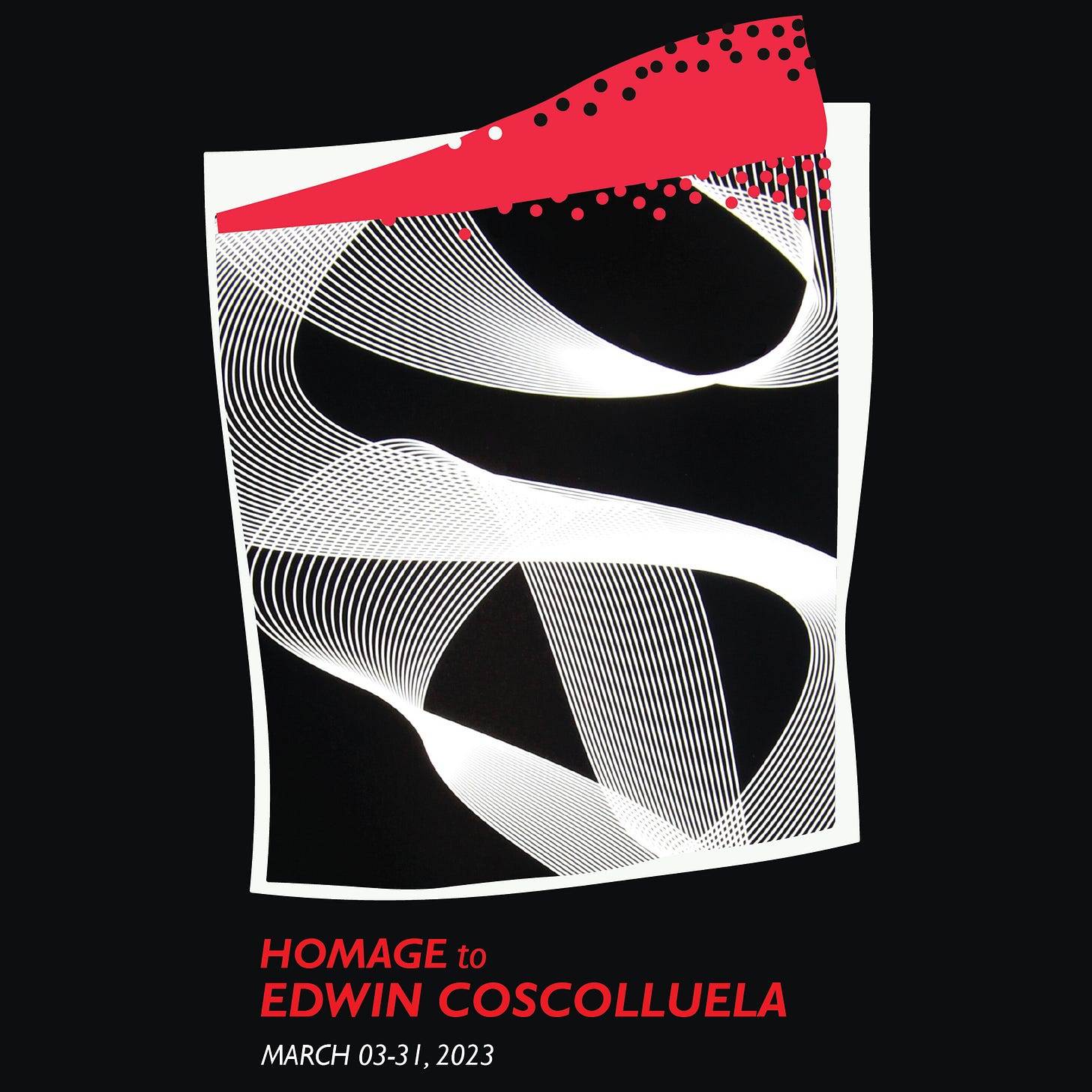“Like life, my paintings have sharp or blurred edges.” - Edwin Coscolluela
Art has a way of capturing a moment, an event, or an experience that challenges how we visually perceive images beyond their forms, appearances, and representations. Edwin Coscolluella’s works have managed to champion this notion throughout his entire artistic career, provoking the viewers’ eyes into optical bafflement and immersing them in his spacious but engulfing minimalistic compositions. Since the 1970s, Coscolluela has devoted himself to creating abstract works that continuously pushed the limits and borders of viewing a two-dimensional surface by opening the planar space to virtual movement; depicting cadence and motion, and morphing abstraction into Optical illusions (Op Art) and Kinetic Art.
His masterful way of employing the simplest elements with his compositions allowed him to create dynamic combinations between the positive and negative spaces within his works, translating into varying visual experiences when seen at a distance and when viewed closely. This technique of abstraction relays his intent to create paintings that are like newspaper pictures - having sharp, crisp, and defined edges but changing into half-tones, dots, grains, and blurred images at close range.
In his paper collages, we see how he employs his perceptual vision with the use of seemingly simple geometric and curvilinear forms along with the contrasting values of the positive and negative spaces. In Image 22, the viewer is given a multidimensional option in interpreting the shapes within the composition, on one hand, the dominant black colour can be seen as the background that highlights a white rectangular shape in the lower left corner, or the perceiver may find the two triangular shapes set on opposing corners in black and white contrasting colors. The same could be seen in Image 23, the black octagonal shape simultaneously deploys the white triangles on every corner. The enigma of his works hides in the simplicity of his elements and then draws you into the details where you see the dots close to the edges blur the defining lines.

His works go beyond the physical experience of deciphering what can or cannot be seen on the surface, rather they are cerebral in nature, touching the invisible imaginative universe of visual perception, capable of inducing a suggestive image outside of the picture plane. In Images 12-16, Coscolluela compels the eye into seeing curvilinear shapes, convex, and concave forms but the audience’s vantage point provides a sense of illusion to the viewer. In Image 14, for instance, a vase-like shape becomes evident by virtue of the bright red-coloured surroundings, but at a distance, the mind is urged to see an entire black oblong cropped out from the picture. This multi-faceted way of approaching the artist’s work allows the democratization of interpretation, preserving the vitality and power of abstraction. Citing Coscolluela himself “... When people look at my works, I want them to feel and not just understand my compositions.”
As a teacher and photographer, Coscolluela has been an early proponent of digital art, embracing the additional dimension of what modern technology can bring into his art-making process. His use of digital art has allowed him to manipulate simple lines and shapes to create his Op Art, images that suggest motion generated from static objects or imagery. In Untitled # 56, a right-angled red triangle grounds our eye into the image but the receding white lines
marking two sides of a large black right-angled triangle creates two opposing movements, one that draws the viewer into the depths of the black image and the other elevates you on top of an illusory tall black object. The crispness and preciseness of lines and their relative distance from each other have allowed flexibility, flow, and perpetuity of synchronous motion as seen in the artist’s works such as Images 064, Images 193, and Untitled #33. Through these works, Cosculluela’s pronouncements on digital art’s dynamism reverberate and solidify his artistic legacy, “The colors of my composition can last up to a hundred years. Six compositions can be enlarged individually or composed into larger panels.”
The exhibition will run through 31 March 2023.
in case you missed…




